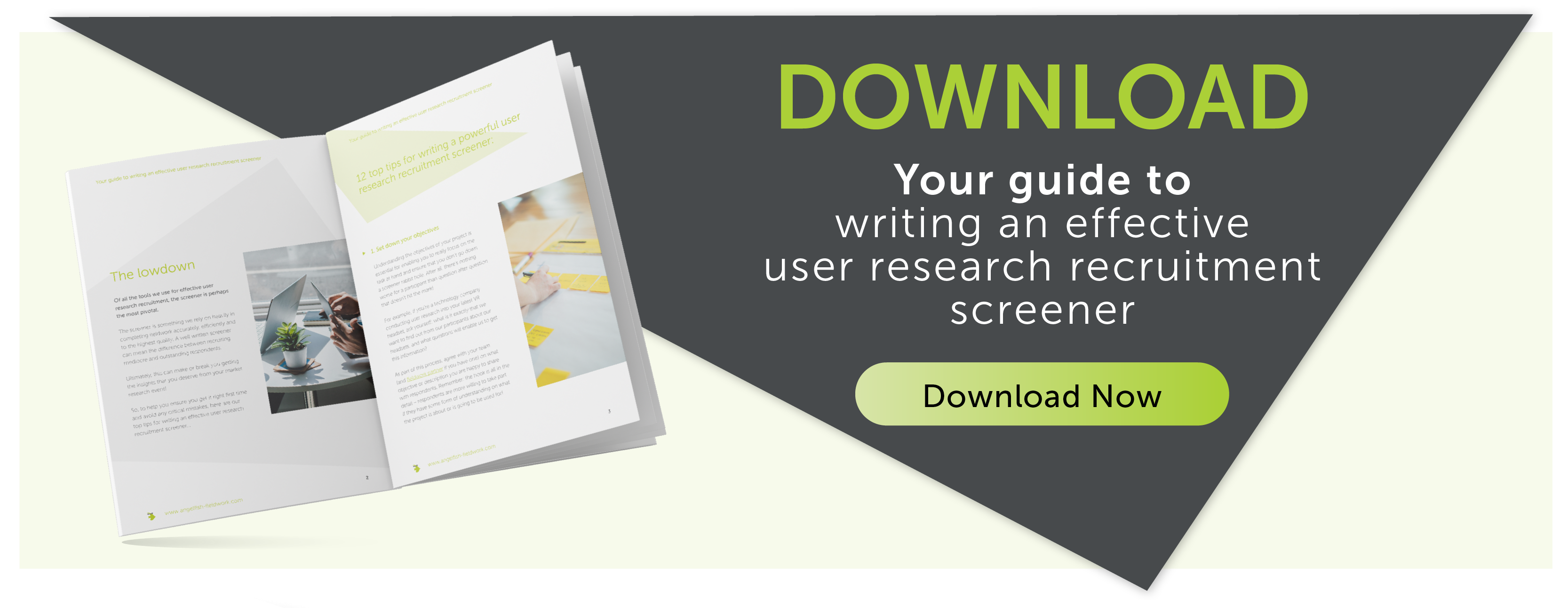
Face to Face or Remote User Testing: Which is Right For You?
User testing is when a company evaluates its products or services by testing it with representative users so it can improve its usability.
Modern customers know exactly what they want, when they want it. Plus, thanks to today’s technology, companies need to deliver a seamless brand experience across all channels, at all times.
As a result, shopper insights are vital to business success, which means that usability testing and user research is becoming increasingly popular in market research.
What is Remote User Experience Testing?User testing essentially allows brands to nail their offering and ensure they are delivering the ultimate customer experience so that they can stay ahead of the competition.
Remote user experience (UX) testing generally involves people conducting various tasks on a website or app, whilst specialist software captures their behaviour to provide an insight into what works, what doesn’t, why people are staying on a website or why they are leaving.
However, user experience testing can also be conducted face-to-face; for example, in shops to assess the overall usability of a store, such as the layout or shoppers' browsing experience.
User Experience Matters
User testing allows brands to step into their customers’ shoes and look at things from their perspective. It enables businesses to get into the minds of their consumers to see what is working, what isn’t and why. In today’s competitive world, it’s not just about having a product or a website that looks good.
With more customer choice than ever before, products need to solve a problem, whilst websites need to give customers access to the information they need, fast. If not, the customer will just go elsewhere.
The stats speak for themselves: 61% of people say that if they can’t find what they are looking for right away on a website, they’ll move on to a competitors site, whilst 97% of customers say ease of use is the most important quality of a mobile app.
So it’s easy to see why user testing and user research is becoming such an integral part of brand strategy!
The Two Ways to Do It...
When it comes to user experience testing, there are two ways to do it: either face to face user testing with a moderator, or remote user testing without.
Both have their pros and cons, from cost-effectiveness and speed to the quality of the results. If you are thinking of conducting user testing as part of your market research and are unsure which is right for you, read on to discover the benefits of both methods…
The Case for Face to Face

Without a doubt, an important reason why researchers often choose to conduct user testing studies face to face is because of the relationship they can build with the participant.
It’s much easier to build a relationship based on real human interaction – and the more trust your respondents have in you, the more open they’ll be, which means they will also be more likely to speak their mind and share open and honest opinions.
One of other main benefits of using a moderator and conducting face to face user testing is the ability to probe and dig for deeper insights, whilst gauging the situation in person and asking the right questions at the right time also means researchers can unlock more in-depth insights than if a participant was left on their own with a task list to complete.
By asking probing questions, moderators can tease out deeper nuggets of insight. For example, if your respondent says “this is really good,'' you can probe further by asking “what makes it so good?” to unlock more information.
The Argument for Remote User Testing
![]()
Whilst there’s no denying the level of insight researchers can access in a face-to-face setting, sometimes having an in-person moderator just isn’t feasible when it comes to carrying out user testing. In these cases, remote user experience testing is a great alternative. It comes with some benefits of its own, too!
One of the biggest benefits of online studies is that you have more flexibility. Ultimately, you won't find yourself tied down by geographical considerations, travel time, small sample sizes and so on with remote testing.
Plus, because you aren’t restricted to a specific location, you can reach a wider range of participants and ensure your sample is representative of your customer base.
It will make your life much easier, too. After all, with a remote study, all your participants need is a working internet connection to take part. There’s no need to arrange in-person studies and juggle people's diaries or send moderators up and down the country, which will save you time and money in the long run!
Instead, remote user research studies fit in around your participant's lives. Plus, because they can take part whenever and wherever is convenient for them, you’ll likely enjoy higher response rates, too.
Granted, you might not have face to face interaction with your participants, but arguably this could lead to more natural results. Think of it this way: have you ever tried to navigate a website with someone watching? Or gone on a shopping trip with a friend only to be distracted an leave the store without getting everything you needed?
The truth is, having a moderator present can be a distraction, and by leaving your participants to it with clear instructions to guide them through the tasks, remote user experience testing can actually deliver natural and more organic results.
Making the Right Choice
To conclude, both face to face and remote user testing have their pros and cons. The right choice for you will most likely depend on a range of factors, including sample size, feasibility, budget, timelines and of course, the objective of your research in the first place!
Perhaps most important of all, however, is finding the right participants to take part in your study – and this starts with writing an effective screener!
To get started, download our free guide below...
Further Reading:














